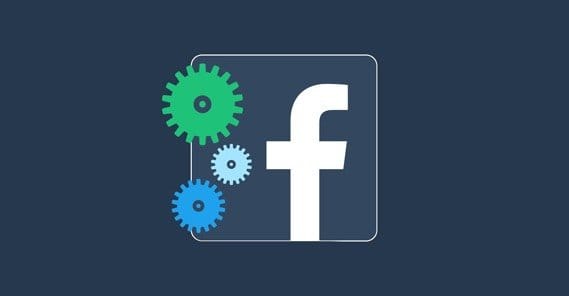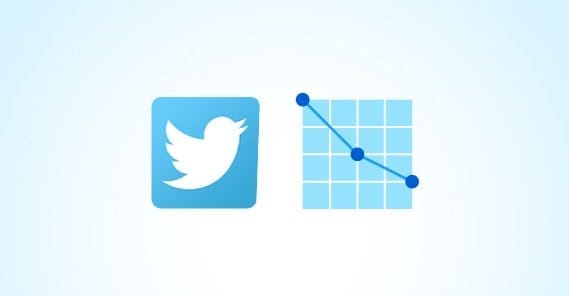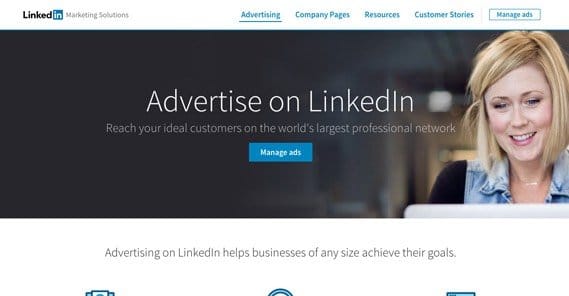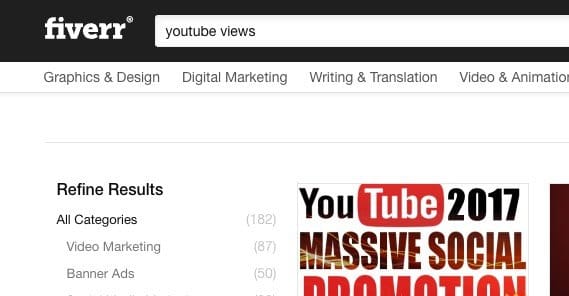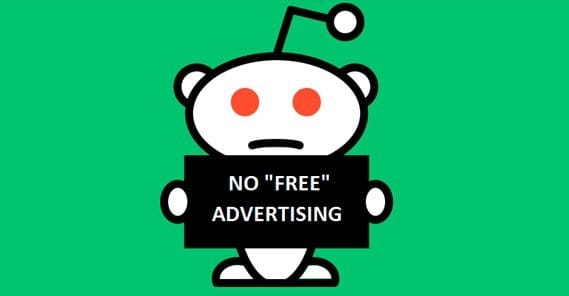Can You Buy Traffic to a Social Media Page?
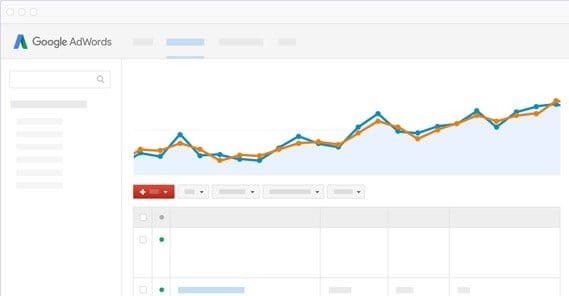
In general, the answer to “can you buy traffic to X social media page” is going to be “yes.” There are, in fact, two real ways to buy traffic to a social media page. Usually, the social network in question will have a legitimate way of buying traffic, typically through an advertising network they own. This will come in the form of promoted posts or promoted accounts. The alternative method is to buy traffic from a third party seller, which could be as legitimate as Google AdSense, or as shady as Fiverr or some Malaysian freelancer.
As you might expect, buying traffic in a legitimate way is always going to be better than the lower quality sources. Low quality sources are generally, at best, going to be broad and untargeted traffic. That means it will have low conversion rates and low engagement rates. Even worse sellers might just give you bot followers rather than real people, and that just doesn’t do anything for you.
Buying Traffic for Facebook
The legitimate method for buying traffic to Facebook is to just use Facebook ads. Facebook ads are probably one of the best ways to buy traffic, engagement, or followers on the web, because there’s a hilariously huge amount of personal information the site can use to categorize people into demographic groups.
If you really want cheap traffic, rather than going to third party sellers, you could just tweak more of the targeting settings Facebook offers in their ads system. It’s entirely possible to get down to penny clicks, though that’s just as bad as Fiverr traffic. Still, it’s one of the cheapest ways to get targeted, valuable traffic online.
If you really want to buy traffic from someone other than Facebook, you can go the Fiverr route, or you can look for other companies that sell traffic. Some of them just manage ads for you, which is perfectly valid, while others use more black hat strategies like view swapping or link redirection.
Facebook is one of the networks most sensitive to fake followers, so I recommend being careful with the cheapest view sources. You can really shoot yourself in the foot by spamming your audience with cheap followers, diluting your message and making it harder to reach the people who matter.
Buying Traffic for Twitter
Twitter Ads are freely available to any account that wants to activate them, and there’s no cost to do so. You can use the ads to promote your profile, promote specific tweets, or even create a new promoted trend. I would shy away from a promoted trend, however; they tend to be very expensive, the kind of thing only high profile companies like Nike or Coke would be able to afford.
Twitter ads aren’t nearly as robust as Facebook ads, so you might look for traffic from third party sources. Twitter is also less subject to fake views than Facebook, but you do have issues if your traffic doesn’t do anything. Simply viewing a tweet doesn’t show up as a metric anywhere; you want actual engagement. Fake engagement can be bought, but so can real engagement, and the price difference isn’t all that great.
Overall, I would recommend using Twitter ads or, if you’re feeling saucy, use Facebook ads to market to your existing audience promoting your Twitter account. This gets you more audience crossover, which can be valuable in promoting your brand.
Buying Traffic for Instagram
Instagram is a good network to buy traffic for, if you’re buying it legitimately. However, buying lower quality traffic is fairly detrimental, because your window of opportunity for going viral is very small. Because of how time-sensitive the visibility of a post is on the network, you don’t want to waste time trying to expand on an old post when a new post would do much better.
The interesting thing here is that just about everything I said for Facebook applies to Instagram. Facebook has owned Instagram for several years, and the current Instagram ad system actually goes through Facebook ads. If you want to buy ads for an Instagram account, you need to do it through a Facebook account.
The caveat here is that not all of the same demographics and targeting options exist. Instagram is far more limited, so while those options exist when you create an ad, selecting them will restrict the ad to Facebook. You have to stay within certain Instagram-only boundaries to be successful.
Buying Traffic for LinkedIn
LinkedIn isn’t usually a social network people think of when they talk about buying traffic. The reason is two-fold. For one thing, it’s not really a traffic-driven network. For the other, there aren’t really engagement or view metrics you can use to put that traffic to use.
Essentially, if you’re going to be buying traffic for LinkedIn, you want traffic that is either targeted locally or targeted to your demographic. The reason is because you generally want people who are going to be valuable to you. This means connections who could turn into employees, influencers, partners, or routes to one of the above.
I would very much not recommend third party sellers for LinkedIn. They will be dramatically cheaper, but also will be almost guaranteed to be useless. Unless you’re looking for people in Hyderabad or Cairo, go ahead and use LinkedIn’s actual ad system.
I’m going to be honest here: I have very little experience with LinkedIn ads and their ad system. On the surface it’s much like any other PPC or CPC network, but it works within their connections system to recommend your brand page to other people who might be interested in it. However, it’s surprisingly limited in scope, so it might not be worth using. I suppose it depends primarily on how important LinkedIn is to your overall growth.
Buying Traffic for Google+
Google Plus, as you might expect, is a Google service and thus relies entirely on Google Ads to buy traffic. Google’s ads are perfectly legitimate and can be targeted fairly well, though not quite as well as what you can get from Facebook. I trust that I don’t need to actually link to Google ads; if you’re having trouble finding them, you’re going to be having a lot of other issues.
Interestingly, there aren’t a ton of people selling traffic or engagement for Google+. There are, however, a lot of people selling traffic FROM Google+. The idea, I guess, is that it’s pretty easy to circulate a link on Google+ and send traffic from it to whatever you want to promote.
This is actually a good source of traffic for other social networks. Create a suitably viral-like post on Facebook or Instagram or whatever, then post a link to it on Google+ and promote it on G+ itself. You’ll get some decent results, and it can work well in conjunction with the native ads on the site you posted on originally. You can one-up this as well by linking to or writing about the post on your blog and promoting the blog as well, for an extra layer of circulation.
Buying Traffic for YouTube
YouTube is another offshoot of Google, and you do go through AdSense/AdWords for your ad needs, but there are a lot of YouTube-specific pieces of information you might want to learn. You can find the rundown in the creator academy, specifically here. Different types of ads work differently, and you can use YouTube to promote other social networks, as well as using other social networks to promote YouTube.
Buying views, likes, and engagement for YouTube videos is one of the most common forms of low-quality ad buying online. People on Fiverr, on black hat forums, and on dozens of sale sites will happily sell you thousands of views. Almost all of those views will be actively filtered by YouTube, and enough fake views can get your video removed entirely, or at least blocked from monetizing.
Use your best judgment where you’re getting your YouTube views from. I recommend running a few ads through the native ad system first, then investigating any third party seller. Chances are you’ll find that, per-engagement or per-subscriber, you’ll be as cheap or cheaper just buying ads natively. It all depends on ad composition, of course, but at the very least it’s going to be safer.
Buying Traffic for Pinterest
Pinterest is an interesting social network, because it’s almost entirely based around sharing content from other social networks and from websites, rather than sharing content you find on the network itself. Pinterest is rarely, if ever, a primary source. In fact, there’s a lot of controversy about that online. People kind of hate seeing Pinterest results show up in Google search, which ironically makes buying Pinterest ads that much more important.
Pinterest ads allow you to promote specific pins for a relatively modest fee. There’s nothing really noteworthy or exceptional about how the ads system works, either; it’s just your typical promoted post with basic targeting options.
It’s worth noting, however, that Pinterest can be great for getting traffic to other social networks, if you’re in the right industries. A lot of the crafty, DIY-style content has excellent viral potential on Pinterest, as does art and infographics.
Buying Traffic for Tumblr
Tumblr is sort of a cross between a blogging platform like WordPress.com and Livejournal, and a social network. As you follow people, you build up a dashboard that is sort of like an RSS feed that pulls from every blog you follow. That dashboard can have ads in it, promoted posts from people you don’t follow, and that’s how you would buy traffic to a blog on Tumblr. You can read all about it in their business section, here.
Since Tumblr works more or less just like any other website, especially if you buy a domain name to use instead of using a .tumblr.com domain name, you can also use any other advertising method to buy traffic to a Tumblr blog. In fact, it’s probably more beneficial to do so; a lot of Tumblr users actively dislike ads in their dashboard and use adblockers to get rid of them. Also, since Tumblr is owned by Yahoo, you want to exercise some caution. Yahoo doesn’t exactly have the best track record with their advertising.
Buying Traffic for Reddit
Reddit is another social network where most content comes from other places, so it’s the place you buy ads to promote content on other sites. You do generally want to be a user before you try to be an advertiser, but it’s entirely possible to just jump into the ads system and experience it firsthand.
Be very careful when using the Reddit ads system. Reddit is a community that rebels against things they don’t feel “fit” the site, so if your ads are too advertorial or if someone finds something to mock about them, they will call you out on it. Sure, you’ll get a lot of traffic, but a lot of that traffic comes from your shiny new #marketingfail branding. It can be a huge hit, or a huge miss. Most people come to Reddit for entertainment and news, so if you’re trying to sell plumbing hardware, you’re going to have a hard time.
Buying Traffic for Snapchat
Snapchat is a newer and more exotic social network, where content doesn’t stick around and where your audience tends to be more personal. It’s like a transient Instagram, particularly from back when Instagram was limited to mobile-only. They recently launched their ads system, which is entirely self-serve and allows you to promote your content in some interesting ways.
I wouldn’t recommend buying third party traffic for a Snapchat profile; the key to Snapchat success is the personal relationship. If you’re bloating your audience with a fake phone farm in some third world country, you’re just wasting your money.
 ContentPowered.com
ContentPowered.com
